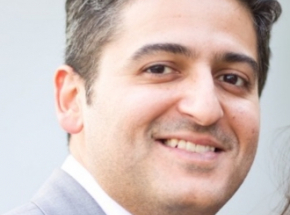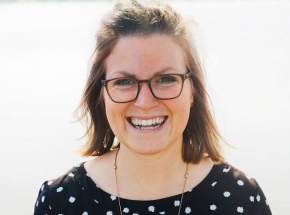- About AUP
- History of AUP
- Mission & Core Values
- Vision and Leadership
- AUP Recognition
- Alumni Success
- Campus Development
- Arts at AUP
- Policies & Guidelines
- Academics
- Undergraduate
- Graduate Programs
- MA in Diplomacy and International Law
- MA in Global Communications
- MSc in Human Rights and Data Science
- MA in International Affairs
- MA in International Affairs, Conflict Resolution, and Civil Society Development
- MSc in International Management
- MSc in Strategic Brand Management
- Find Your Thesis Advisor
- Previous Programs
- Cultural Program
- Faculty
- Summer School
- Research Centers
- The Center for Critical Democracy Studies
- The Center for Writers and Translators
- The George and Irina Schaeffer Center for the Study of Genocide, Human Rights and Conflict Prevention
- The Joy and Edward Frieman Environmental Science Center
- The Center for Media, Communication & Global Change
- Departments
- Academic Resources
- Academic Affairs
- Academic Calendar
- Academic Resource Center
- Library
- Registrar's Office
- Teaching and Learning Center
- Employer Network
- Accessibility & Accommodation Services
- Quai D'Orsay Learning Commons
- Paris as Classroom
- ACE Center
- Admissions
- Student Life
- Campus
- Get Involved
- Paris
- Support Services
- Student Development Help Desk
- Student Accounting Services
- Student Immigration Services
- Student Grievance Procedure
- Accessibility at AUP
- Diversity and Inclusion
- Health & Well-being
- Digital Student Handbook
- News
- Events
- AUP Giving
- Housing Offer for 2024-2025
- Housing | Spring 2024
- IRIS Project
- IT Services
- Alumni
- About AUP
- History of AUP
- Mission & Core Values
- Vision and Leadership
- AUP Recognition
- Alumni Success
- Campus Development
- Arts at AUP
- Policies & Guidelines
- Academics
- Undergraduate
- Graduate Programs
- MA in Diplomacy and International Law
- MA in Global Communications
- MSc in Human Rights and Data Science
- MA in International Affairs
- MA in International Affairs, Conflict Resolution, and Civil Society Development
- MSc in International Management
- MSc in Strategic Brand Management
- Find Your Thesis Advisor
- Previous Programs
- Cultural Program
- Faculty
- Summer School
- Research Centers
- The Center for Critical Democracy Studies
- The Center for Writers and Translators
- The George and Irina Schaeffer Center for the Study of Genocide, Human Rights and Conflict Prevention
- The Joy and Edward Frieman Environmental Science Center
- The Center for Media, Communication & Global Change
- Departments
- Academic Resources
- Academic Affairs
- Academic Calendar
- Academic Resource Center
- Library
- Registrar's Office
- Teaching and Learning Center
- Employer Network
- Accessibility & Accommodation Services
- Quai D'Orsay Learning Commons
- Paris as Classroom
- ACE Center
- Admissions
- Student Life
- Campus
- Get Involved
- Paris
- Support Services
- Health & Well-being
- Digital Student Handbook
- News
- Events
- AUP Giving
- Housing Offer for 2024-2025
- Housing | Spring 2024
- IRIS Project
- IT Services
- Alumni
Faculty
Professor Behnke
The Power of One Word Branding
Related Graduate Programs :
Professor Michael Behnke
As a professor on AUP’s new MSc in Strategic Brand Management, Michael Behnke brings his professional experience with him into the classroom, teaching students to adapt to changing trends in branding.
Tell me about your academic and professional background
I am somebody who mostly studied in “real life.” I did a professional diploma in Germany following my high school studies, before taking part in a student exchange program offered by the German government, which gave me access to a US work permit. After spending a few months in the MBA program of the Oklahoma City University, I started working in advertising. Branding is my big passion – I have read widely on the subject. I don’t have a PhD or master’s degree; my academic background is more self-made. My speciality is global branding, mostly in the B2C space, but sometimes B2B. I’ve worked for global agencies in New York, Hamburg, Frankfurt, Sao Paolo and Paris. I've run big international accounts with companies such as American Express, Mercedes Benz, Dove, Colgate, L’Oréal and Danone.
What led to you setting up your own company?
When you run a big global client account, you work with senior management – dealing with the same marketing and branding problems they have to deal with on a daily basis, keeping their brands actual and relevant to consumers. My many years working around the world have given me strong insights into marketing fast-moving consumer goods. I leveraged this professional experience when I set up my branding agency, Belly Button. We sometimes create international brands from scratch – finding a name and deciding on the positioning and target audience, for example – but, mostly, we work with existing brands, helping them adapt to modern markets and providing them with relevant meaning. This is called brand repositioning: redefining what these brands stand for.
Talk me through your methodology
I call our methodology “one-word positioning.” It allows Belly Button to define the positioning of a brand in just “one” word, or one single-minded angle. This is very powerful, because one-word positionings act as a prism through which all the brand’s activities can be viewed inside a given brand-owner company. BMW, for example, stands for “driving pleasure.” The whole company works to augment driving pleasure – from product design to marketing and sales. I first started to develop the principles of a one-word positioning strategy when I worked for Young & Rubicam on the Danone account. The Danone corporate brand’s one-word positioning became “active health.” These words turned into the driving force for Danone; all that energy and creativity, over 100,000 people working worldwide, had been brought together behind a single-minded mission: to offer nutrition as a means for “active health,” using all Danone brands around the world as ambassadors to communicate this mission to consumers, differentiating the brand from its competition. I later also applied this new methodology to the repositioning of Activia and Actimel, two of Danone’s biggest functional food brands, each now worth over $3.5 billion in sales every year. This allowed me to see first-hand how effective a one-word positioning strategy could be, which was vital when setting up my own company. I’m now working on a book about this methodology, so I can transmit the technique to a wider audience.
What brought you to AUP?
I was introduced to the University by Peter Barnet, who was a professor in what was then the Department of Global Communications. We had worked together at Ogilvy in New York. He had reached retirement age and was looking for someone to take over some of his classes. I’d always wanted to transmit what I’d learned through my work to students, so I accepted. It’s not entirely altruistic – teaching helps me stay in touch with the younger generation, which in turn helps me with my branding and communication work.
What do you teach as part of the MSc in Strategic Brand Management?
I teach the branding practicum, which is a hands-on experience for students to learn how to build a brand from the ground up. I take them through all the tools needed to create their own project, coaching them through every step. Students often create brands that I would not be ashamed to present to clients – very clearly defined brands with a unique name and identity. It’s a very intense course, and I think students get a lot out of it, because they learn how to immediately apply their academic background to a hands-on project working on a real brand. I think that is a unique opportunity.
How would you describe your teaching approach?
When I meet professors from other universities, they are very knowledgeable about the subject of branding, but I often realize that they lack professional experience – they have never done it themselves. My approach to teaching is to balance 50% academics with 40% practical work with real-world applications. The last 10% is anecdotes from my own work – it's often these stories that students say they remember most. They form the cement that glues theory and practice together.
How has branding changed over the course of your career?
Traditionally, branding was managed by the companies themselves – the brand owners built the brand. Today, the brand is built by consumers. It’s become less about what you say about your brand and more about what the consumer says about it. Social media has had a huge impact on branding; now, brands need to be seen as being active in sustainability or social justice. There needs to be a sense of “doing good.” That’s a paradigm shift. I’m paraphrasing, but I've heard it said that for the first 10 years of the 21st-century, the aim of branding was to make better things. Now brands need to make things better. The future will be all about brand purpose.
Related
-

Hamza Usman G'09
Alumnus
Read MoreHamza Usman G'09
Alumnus
Hamza Usman G’09 turned a gap in the pharmaceutical market into a force for social good, laying the foundations for safer, more professional pharmacies in...
-

Paige Beaton Coulier G’13
Alumna
Read MorePaige Beaton Coulier G’13
Alumna
As brand builders, we are out in the world every day, helping people know and love our companies.
